Farmers adopt agroforestry systems to restore degraded cocoa-producing areas in Brazil
新華網(wǎng)
Editor: huaxia
2025-09-11 18:55:27

A farmer plants cocoa tree seeds at a cocoa tree nursery in Brasil Novo, Para state, Brazil, on Sept. 9, 2025. Located in northern Brazil, the state of Para is the largest cocoa-producing area in Brazil, with annual yields of approximately 150,000 tons of cocoa beans, 95 percent of which are exported. To restore degraded lands and enhance farmers' income, the Nature Conservancy (TNC) in Brazil encourages farmers to adopt agroforestry systems, integrating cocoa cultivation with other tree species to rehabilitate degraded or low-productivity areas. This agroforestry approach also enables rural producers to diversify their income by growing fruit trees and other native species, contributing to a sustainable agricultural model. (Xinhua/Zhou Yongsui)
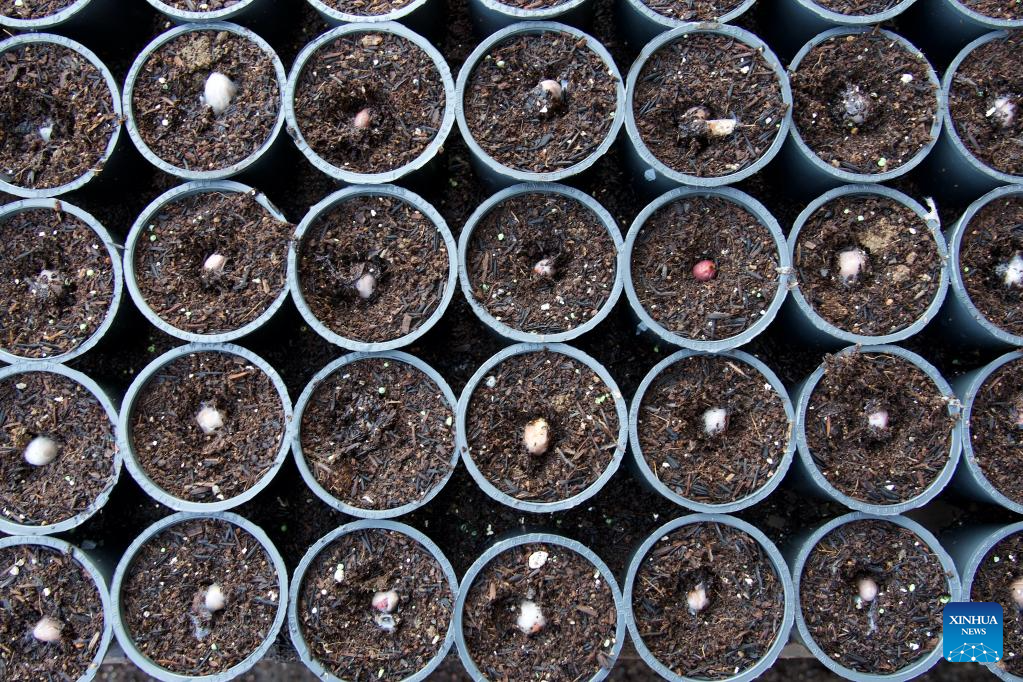
This photo taken on Sept. 9, 2025 shows a view of a cocoa tree nursery in Brasil Novo, Para state, Brazil. Located in northern Brazil, the state of Para is the largest cocoa-producing area in Brazil, with annual yields of approximately 150,000 tons of cocoa beans, 95 percent of which are exported. To restore degraded lands and enhance farmers' income, the Nature Conservancy (TNC) in Brazil encourages farmers to adopt agroforestry systems, integrating cocoa cultivation with other tree species to rehabilitate degraded or low-productivity areas. This agroforestry approach also enables rural producers to diversify their income by growing fruit trees and other native species, contributing to a sustainable agricultural model. (Xinhua/Zhou Yongsui)
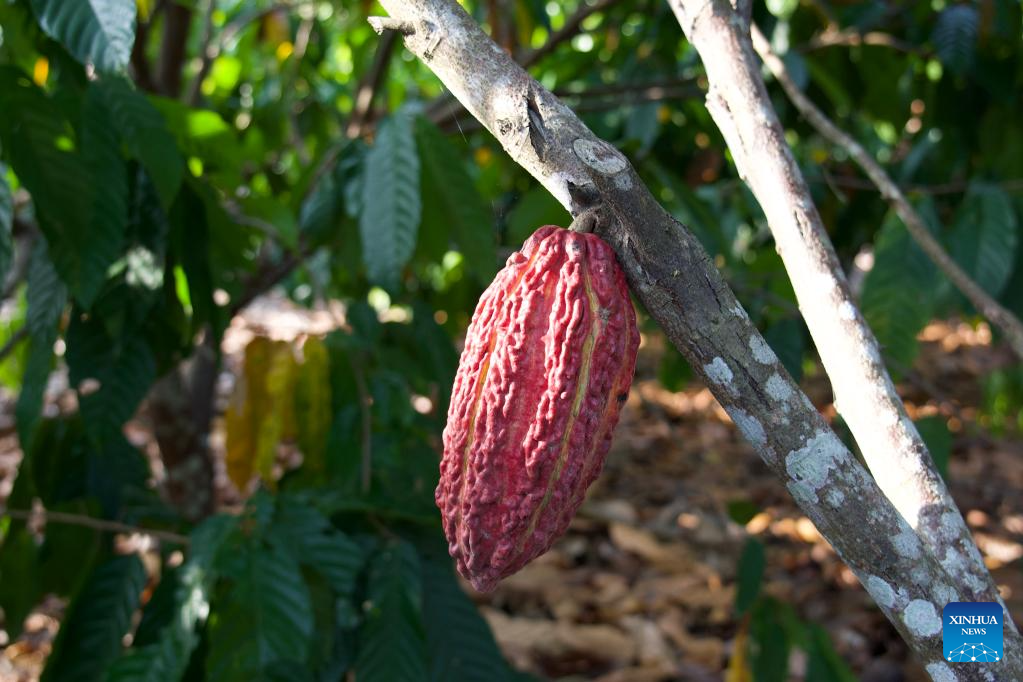
This photo taken on Sept. 9, 2025 shows the cocoa fruits on the tree in a cocoa tree nursery in Brasil Novo, Para state, Brazil. Located in northern Brazil, the state of Para is the largest cocoa-producing area in Brazil, with annual yields of approximately 150,000 tons of cocoa beans, 95 percent of which are exported. To restore degraded lands and enhance farmers' income, the Nature Conservancy (TNC) in Brazil encourages farmers to adopt agroforestry systems, integrating cocoa cultivation with other tree species to rehabilitate degraded or low-productivity areas. This agroforestry approach also enables rural producers to diversify their income by growing fruit trees and other native species, contributing to a sustainable agricultural model. (Xinhua/Zhou Yongsui)
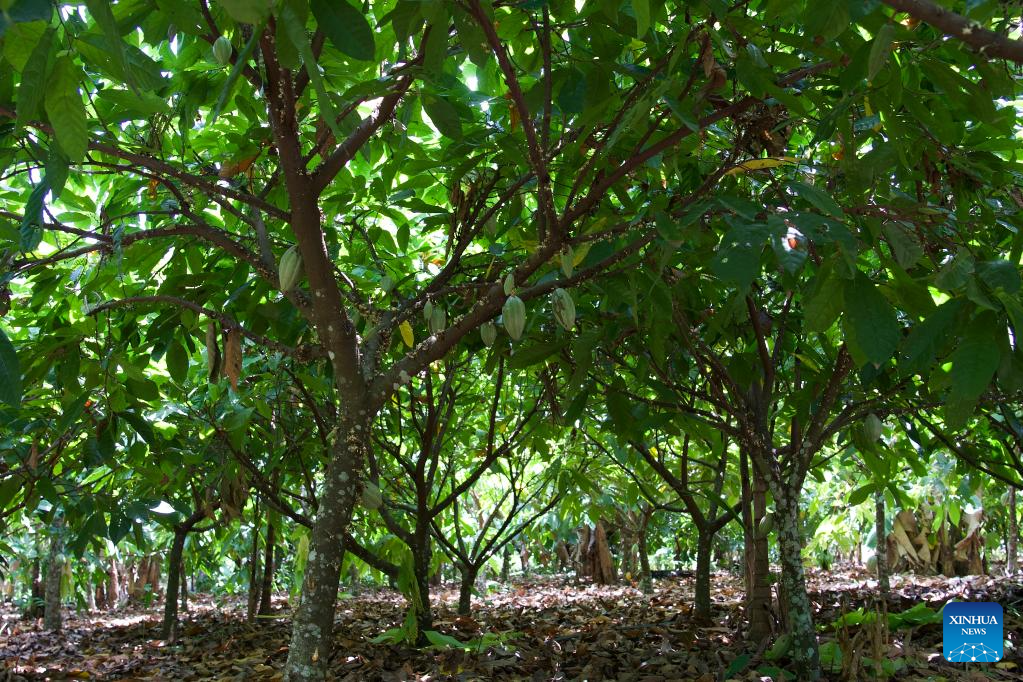
This photo taken on Sept. 10, 2025 shows the agroforestry system at an agroforestry cocoa orchard in Medicilandia, Para state, Brazil. Located in northern Brazil, the state of Para is the largest cocoa-producing area in Brazil, with annual yields of approximately 150,000 tons of cocoa beans, 95 percent of which are exported. To restore degraded lands and enhance farmers' income, the Nature Conservancy (TNC) in Brazil encourages farmers to adopt agroforestry systems, integrating cocoa cultivation with other tree species to rehabilitate degraded or low-productivity areas. This agroforestry approach also enables rural producers to diversify their income by growing fruit trees and other native species, contributing to a sustainable agricultural model. (Xinhua/Zhou Yongsui)
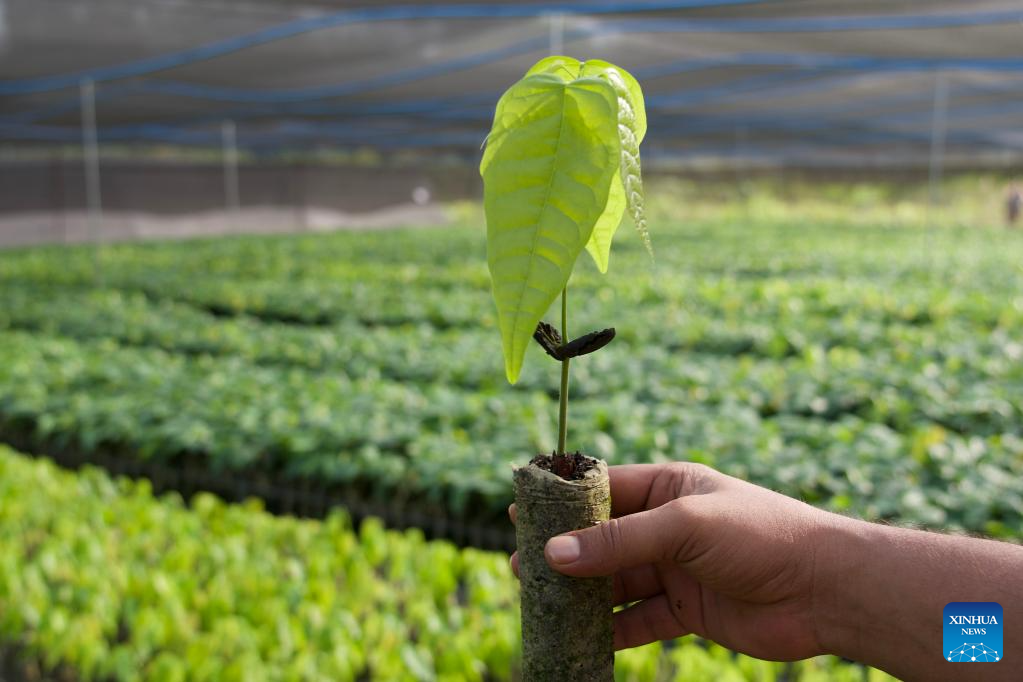
A farmer shows cocoa tree sprout at a cocoa tree nursery in Brasil Novo, Para state, Brazil, on Sept. 9, 2025. Located in northern Brazil, the state of Para is the largest cocoa-producing area in Brazil, with annual yields of approximately 150,000 tons of cocoa beans, 95 percent of which are exported. To restore degraded lands and enhance farmers' income, the Nature Conservancy (TNC) in Brazil encourages farmers to adopt agroforestry systems, integrating cocoa cultivation with other tree species to rehabilitate degraded or low-productivity areas. This agroforestry approach also enables rural producers to diversify their income by growing fruit trees and other native species, contributing to a sustainable agricultural model. (Xinhua/Zhou Yongsui)
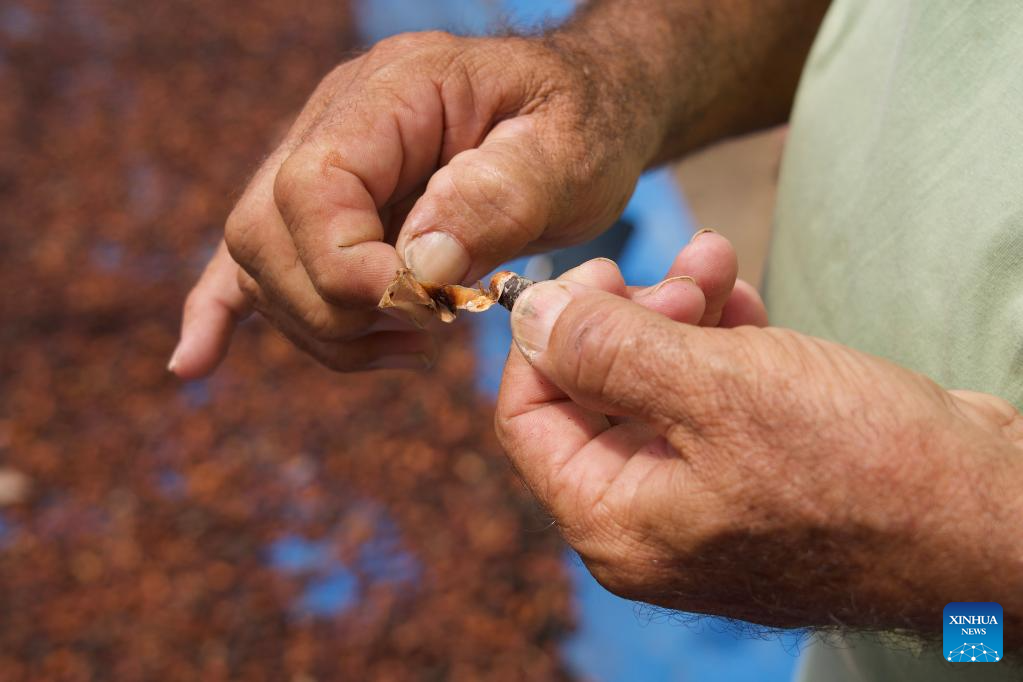
A farmer displays a peeled cocoa bean at an agroforestry cocoa orchard in Medicilandia, Para state, Brazil, on Sept. 10, 2025. Located in northern Brazil, the state of Para is the largest cocoa-producing area in Brazil, with annual yields of approximately 150,000 tons of cocoa beans, 95 percent of which are exported. To restore degraded lands and enhance farmers' income, the Nature Conservancy (TNC) in Brazil encourages farmers to adopt agroforestry systems, integrating cocoa cultivation with other tree species to rehabilitate degraded or low-productivity areas. This agroforestry approach also enables rural producers to diversify their income by growing fruit trees and other native species, contributing to a sustainable agricultural model. (Xinhua/Zhou Yongsui)
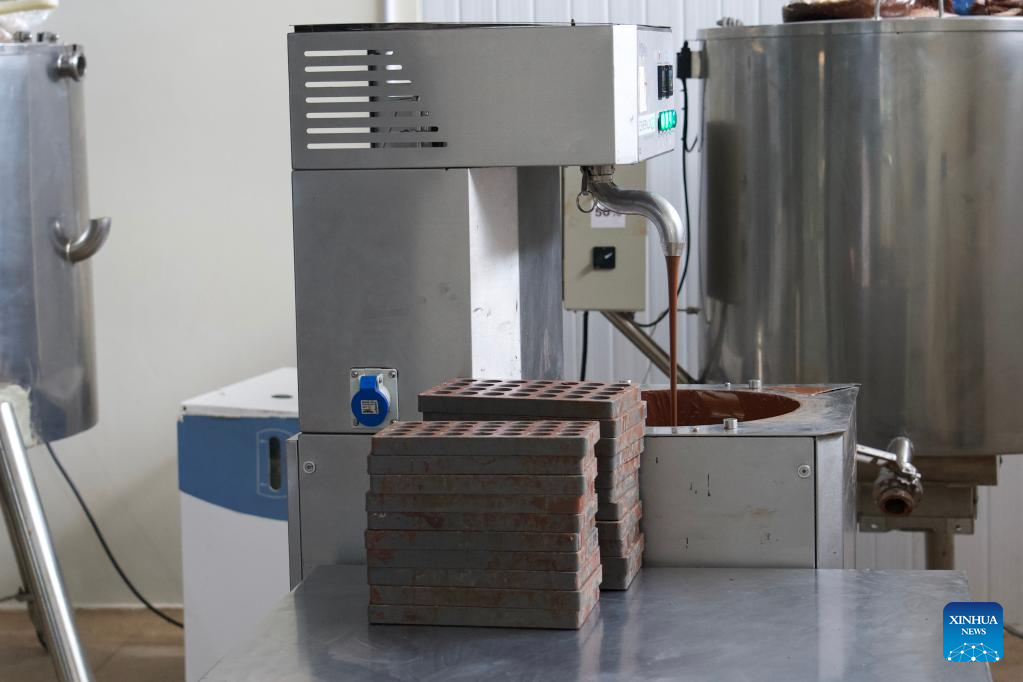
A machine produces cocoa liquor at a chocolate factory in Medicilandia, Para state, Brazil, on Sept. 10, 2025. Located in northern Brazil, the state of Para is the largest cocoa-producing area in Brazil, with annual yields of approximately 150,000 tons of cocoa beans, 95 percent of which are exported. To restore degraded lands and enhance farmers' income, the Nature Conservancy (TNC) in Brazil encourages farmers to adopt agroforestry systems, integrating cocoa cultivation with other tree species to rehabilitate degraded or low-productivity areas. This agroforestry approach also enables rural producers to diversify their income by growing fruit trees and other native species, contributing to a sustainable agricultural model. (Xinhua/Zhou Yongsui)
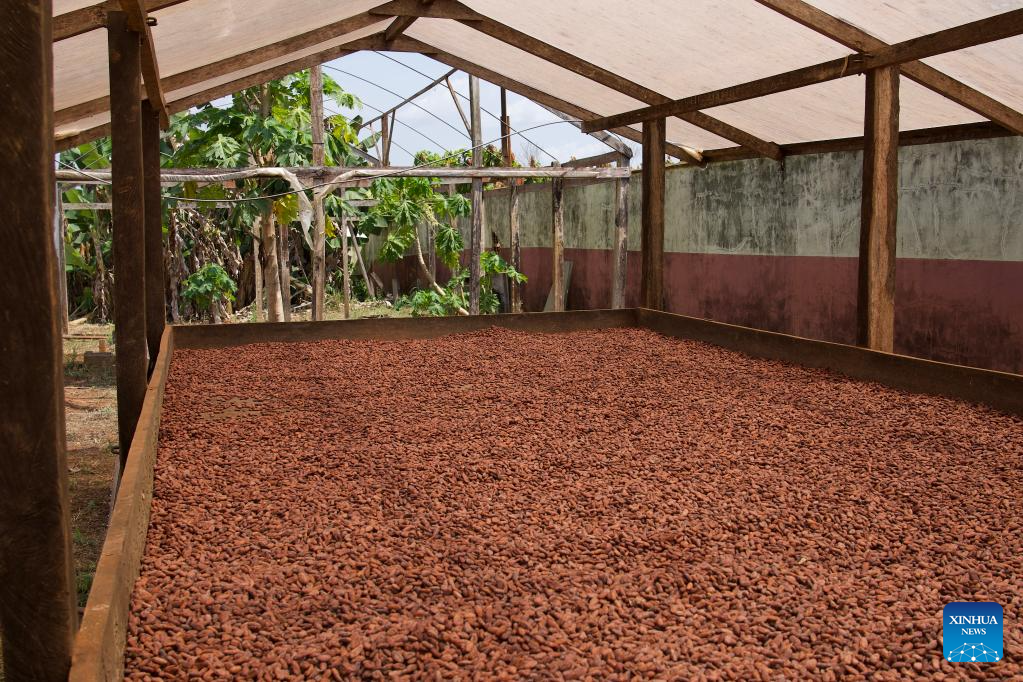
Cocoa beans are sun-dried at a chocolate factory in Medicilandia, Para state, Brazil, on Sept. 10, 2025. Located in northern Brazil, the state of Para is the largest cocoa-producing area in Brazil, with annual yields of approximately 150,000 tons of cocoa beans, 95 percent of which are exported. To restore degraded lands and enhance farmers' income, the Nature Conservancy (TNC) in Brazil encourages farmers to adopt agroforestry systems, integrating cocoa cultivation with other tree species to rehabilitate degraded or low-productivity areas. This agroforestry approach also enables rural producers to diversify their income by growing fruit trees and other native species, contributing to a sustainable agricultural model. (Xinhua/Zhou Yongsui)



